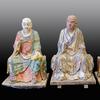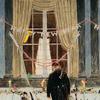Birding Is Ultra Popular During the Pandemic; This Exhibition Offers An Eyeful of 'Rare and Wonderous' Feathered Friends
- May 03, 2021 13:01
The Toledo Museum of Art (TMA) is now showing Rare and Wondrous: Birds in Art and Culture 1620-1820, through July 25, 2021. The exhibition, curated by TMA’s Head of Interpretive Projects and Managing Editor Paula Reich, showcases the museum’s recent acquisition of the important six-volume series “Ornithologie,” written by Mathurin-Jacques Brisson, illustrated by François-Nicolas Martinet and published in 1760.
Rare and Wondrous also features paintings, prints and decorative arts from TMA’s collection, as well as select loans of significant prints and illustrated books from the Yale Center for British Art, the University of Michigan Museums Library and Special Collections, and the Bowling Green State University Libraries Center for Archival Collections.
The exhibition was originally scheduled to open in April 2020, but was postponed due to the coronavirus pandemic. This will be the fifth in the biennial series of bird-themed exhibitions timed to coincide with the Biggest Week in American Birding festival (virtual in 2021, May 6-10) held in the Toledo area each spring.
“The coronavirus pandemic has prompted greater interest in nature and the outdoors, and humans have always had a particular fascination with birds,” said Reich. “We’re glad to be able to shift our schedule and give our visitors an opportunity to learn about how birds – including ‘exotic’ birds brought from foreign lands – informed European culture in the early modern era, not just in art but in science, decorative design and fashion.”
Rare and Wondrous highlights images of exotic birds in European art, primarily from the 17th and 18th centuries, showing how they became the objects of scientific inquiry, popular interest,status, and even household decoration and personal adornment. It will also explore the contributions that Indigenous and enslaved people made to European scientific knowledge about birds and their visual representation.
During the period covered by the exhibition, travel related to exploration, colonialism and the rise of the great European trading companies – as well as the West African slave trade – sparked an intense interest in natural history; attempts to classify and categorize it grew as specimens of plants, insects, shells, mammals and birds were collected from around the world and brought back to Europe. Ornithology, the study of birds and their classification, made especially great strides in the second half of the 1700s with the publication of many lavishly illustrated studies. However, naturalists were not the only ones fascinated by these exotic birds. Monarchs and aristocrats collected them in cabinets of curiosities and menageries, artists painted them, moralizers found symbolic meaning in them and women wore their feathers as accessories.
Another noteworthy object in the exhibition is a recently restored mechanical singing bird box based on a form developed in Switzerland in the 18th century. The silver and enamel box was made about 1845-65 and attributed to Charles Bruguier, a prominent automata maker of the day. The box has been part of TMA’s collection since 1933. When the lid of the box is opened, a small, animated bird with real hummingbird feathers flaps its wings and spins around while singing a realistic song, created by a tiny leather bellows that blows through a slide whistle.













_-Closing-the-Distance_100x100_c.jpg)







